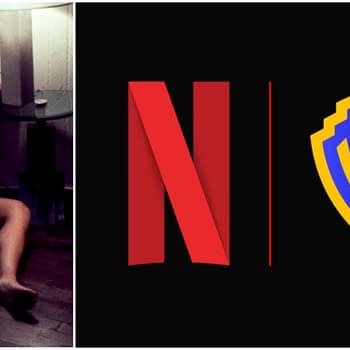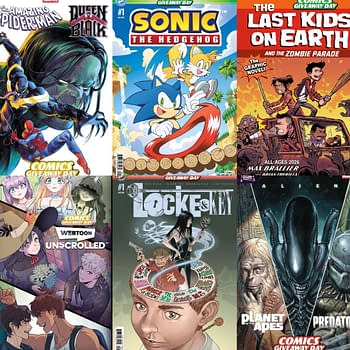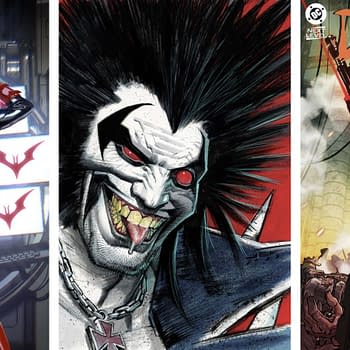Posted in: Comics, Recent Updates | Tagged: Comics, Cory Smith, crowdfunding, entertainment, joe glass, Kevin Wada, kickstarter, LGBTQ comics, Patreon, The Pride
Raising Money for Comics – Funding your Dream Projects With A Pinch Of Salt
By Joe Glass
These days, there are increasingly more and more ways to raise money for the production of comics and related merchandise.
The most common, which a great many creators, both big and small, use are the various crowdfunding sites. Kickstarter, Indiegogo, Crowdfunder, to name but a few; each offers its own features and benefits to a funding campaign to bring attention, interest and, most importantly, funding for your project.
The problem with them is it is quite easy to get wrong. Whether you successfully raise your goal amount or not, funding can still not meet your actual needs. I myself made that mistake on my first comic project: I didn't take into account the postage costs of the items, full printing costs, merchandise & advertising…This was back in the day when crowdfunding was still fairly new, and my team and I were all so excited by the opportunities of it that we didn't take our time and think things through. We know for future projects now, and we can't complain as the funding got us starting strong, but now the funding has long since dried up with much the series left to go.
If a creator now considers crowdfunding, they have masses of other examples to learn from. Just remember to take your time; whilst the temptation is to jump in, make sure to be entirely sure of what you need, and be entirely honest with yourself, and your potential funders.
Another method now on the rise is Patreon.
Patreon is similar to crowdfunding, but without a specific end goal project. Instead, fans can become patrons of their favourite artists and content creators, funding as little as $1 a month. This may sound worthless…but imagine: if a comic (webcomics are particularly common on there) has 3000 regular readers/followers, and all 3000 became a patron for $1, that creator is getting $3000 a month (in theory).
What is particularly interesting about this model is its 'perk' system. Patrons can get access to exclusive content, from early sketches or scripts; and there's a popularity for more social 'perks' including creation lessons or Google Hangout sessions.
Personally, I find these kind of perks particularly interesting. Getting to interact with fans is one of my favourite aspects of comic cons and social media pages for the comics, so offering these kind of perks is especially appealing.
What I think one has to be wary of with Patreon is that they are fully aware of how much they are getting through this model, that they can keep up with the perks they offer, as these are not finite but potentially continuous; and that they are not making promises they cannot possibly keep.
Finally, there are the 'classic' methods: creating merchandise and limited edition products to offer special items that create immediate funds for the projects.
For example, with my comic series, The Pride, this is a method I am employing now (having long passed spent the aforementioned crowdfunding funds that launched the series on the initial issues). Specifically, we have started releasing a series of very limited edition prints by a number of incredible artists, the first two are out now.
The first is by Cory Smith (Dynamite's Magnus: Robot Fighter), and the second by Kevin Wada (Marvel's She-Hulk cover artist).
It's obvious how these can potentially help a comic project out: if there's sufficient profit and sales of the items, you can raise enough to funnel into the production of the main product, for relatively little cost.
In this case, if the Wada print alone completely sold out (there are just 270 in total, 250 by me and 20 by Wada that he'll be selling at Heroes Con), it would raise funds to pay off existing production debts AND pay for the production of the next three issues.
On the flipside, we once created t-shirts for the another comic project, and whilst initial sales were great, they eventually completely dried up, leaving us with a ton of shirts we just couldn't shift, which became a deadweight on us at cons. Ultimately, you are forced to recoup as much of your losses as possible, even if it means undercutting your profits or even the original unit cost.
Thankfully, the prints are selling slow but well, so it looks good, with a little help, to raise the funds needed to finish the end of the series; plus, they've attracted a ton of new readers which lead to increased sales on the comic itself.
The danger with this classic element of fund-raising is that it involves an initial cost, and if they do not sell as you hoped, then you could be left with a further loss/debt to your project.
It may be that the ultimate way of securing, maintaining or increasing funding is a combination of these methods, as well as, naturally, selling of your main item: your comic. But these days, there have never been more ways for you to get that dream project out into the world…so what's stopping you?
Joe Glass is a Bleeding Cool contributor, and creator of LGBTQ superhero team comic The Pride, and co-writer on Welsh horror-comedy series, Stiffs. You can follow him on twitter and tumblr.

















